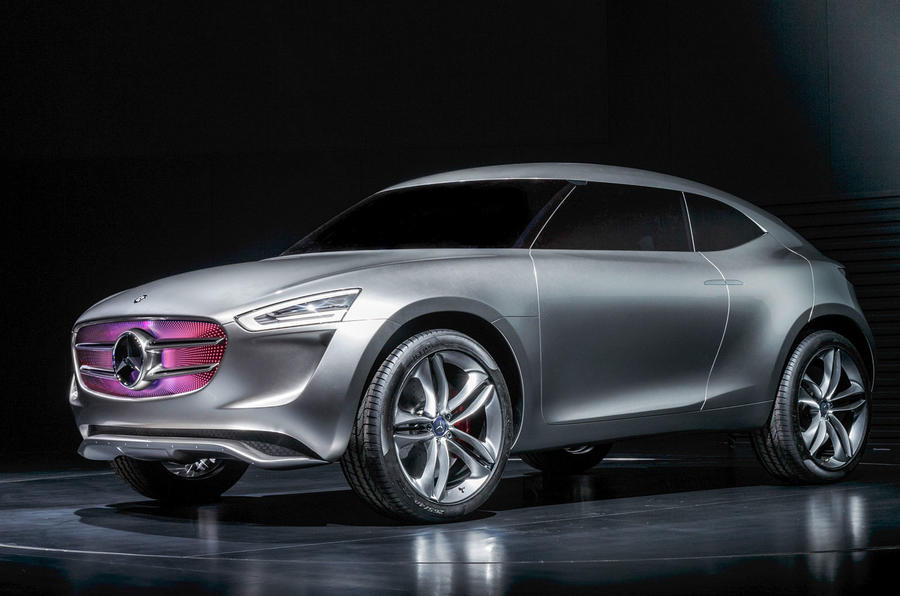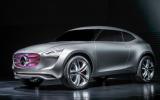Mercedes-Benz has previewed its plans for a new price-leading SUV to be positioned beneath its existing entry-level Mercedes-Benz A-Class line-up.
The firm showed its intentions by unveiling the G-Code, an advanced, hydrogen-electric 2+2 hatchback concept.
The G-Code is said to provide tacit clues to a more conventionally engineered high-riding urban-based SUV model already under development at Mercedes. The new SUV is as part of a future-proofing strategy aimed at attracting younger buyers to the traditional luxury car brand.
The innovative new concept was revealed in a ceremony held to celebrate the opening of Mercedes’ new R&D facility in Beijing, China.
The G-Code has been styled in a collaboration between a team at Mercedes’ advanced design centre in China and its main studio in Germany. Inspiration for the compact four-seater comes from what the company’s head of design, Gorden Wagener, describes as “the modern lifestyle of the younger Asian society”.
The contemporary-looking SUV concept has a muscular five-door hatchback body with short overhangs at each end. It adopts elements of Mercedes’ current design language, including a bold twin-blade grille, angular headlamps with G-shaped LED graphics, prominent chamfered arches housing 21-inch wheels, heavily structured surfacing and a one-piece tailgate,
Among the G-Code’s more flamboyant design touches is a canopy-style glasshouse, with the windscreen wrapping around over the A-pillars to give the roof a floating appearance similar to the treatment used by Mini on its more recent models.
The new concept also takes advantage of the lack of a traditional B-pillar by employing coach-style doors at the rear to give unhindered access to the cabin.
For added visual effect, the grille is backlit in one of three colours – blue, purple or red – depending on the chosen driving mode. The designers have also replaced traditional exterior rear-view mirrors with two cameras mounted on retractable arms within the upper section of the A-pillars. A full-length strip of LEDs is also used at the rear, providing illumination for the indicators, tail-lamps and brake lights.
At 4100mm long, 1900mm wide and 1500mm tall, the G-Code is 317mm shorter, 96mm wider and 6mm taller than Mercedes’ existing entry-level SUV, the GLA. This suggests that the company is looking to extend its line-up into a lower class, where the production version of the G-code would possibly compete against such cars as the upcoming Audi Q1.






































































Add your comment
I think everyone misunderstands the concept
But i think it has its merit in terms the tech and also a attarctive premium A1/Q1 size merc has it appeal,
and some here said Merc's have awful ergonomics, what??? now ay Mercedes ahve always had good ergonomics.. the current range of new nodels are exceptional. the new S-class, C Class are class leadrer in interior quality, feel and ergonomics! Mercs slwoly again getting back to build quality solidity of old!
Mercedes have actually put up a short video of this concept it has some intresting and attarctive features in the flesh
Rear view "mirrors"
Just the thing...